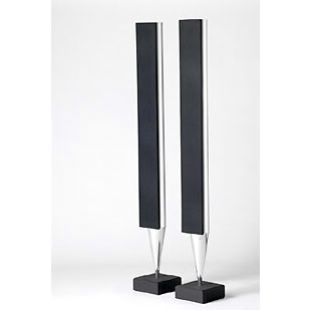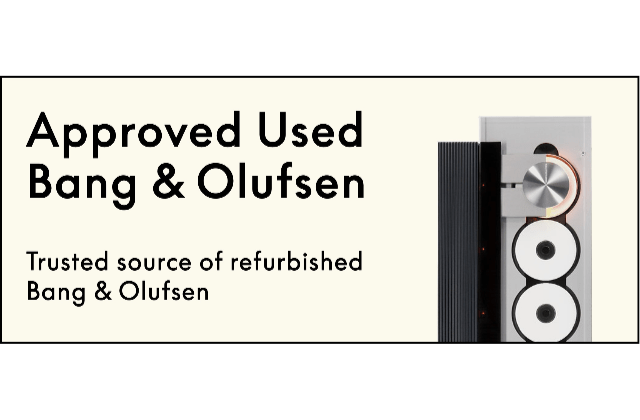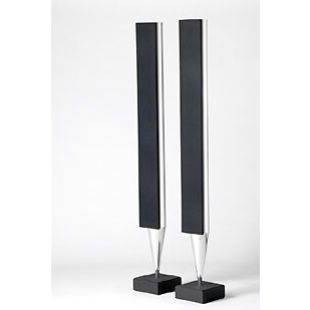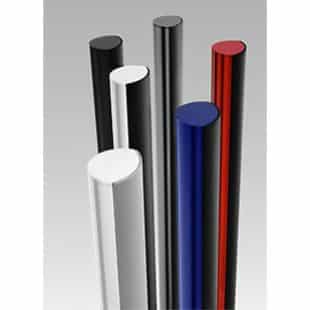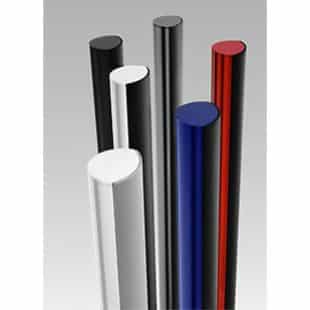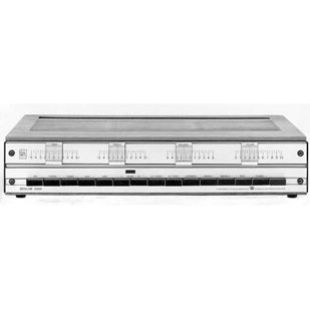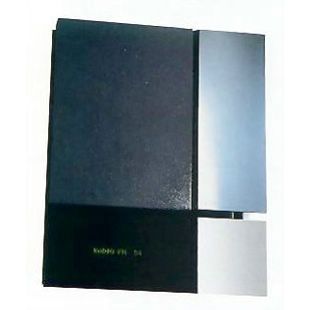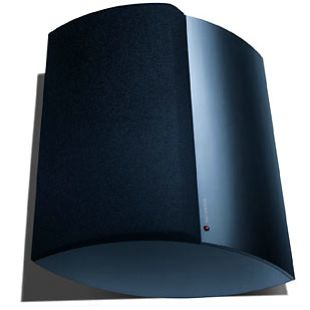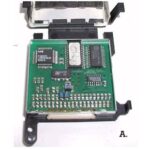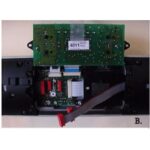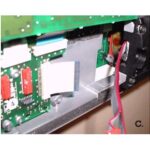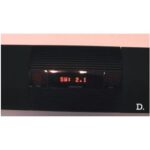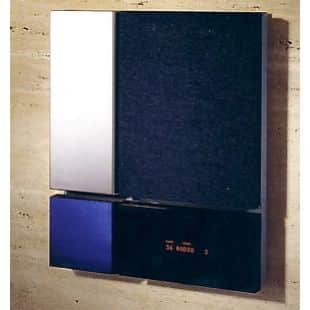There’s not much point in thinking about BeoLab 6000 in terms of watts, woofers or tweeters. There has never been loudspeakers that look like this – or so clear and rich a sound produced from such slender cabinets. BeoLab 6000 represents both the engineering skills as well as the design capabilities from Bang & Olufsen.
BeoLab 6000 is probably one of the most famous speakers around today being a part of the standard exhibition at the Museum of Modern Art in New York along with some other Bang & Olufsen equipment, namely the Beovox Cona (a subwoofer) and the Beocord VX5000, which by the way looks almost exactly as the VX7000 does. BeoLab 6000 is a smaller version of the BeoLab 8000 with the same active construction but with even smaller net volume: 3 litres.
A great advantage with the BeoLab 6000 is the fact that it has two PowerLink connections giving the possibility to loop-through the signal to the second speaker directly. This speaker is used very often as the second pair in a Dolby Pro-Logic setup for example in the AV9000 system.
” When it comes to sound reproduction we believe there’s only one relevant parameter: How close can we come to the originally recorded sound. We feel an obligation not to disturb the intentions of the artist by adding unnatural elements to the acoustic image. Therefore all Bang & Olufsen loudspeakers share the same goal. They differ in size and shape and in terms of sound pressure level. But they are all developed to reproduce the natural, unaltered sound as closely as possible “ – Bang & Olufsen catalogue 2001 – 2002
Features:
BeoLab 6000 fills the room with sound
The choice is simple – you can fill your home with big black boxes, or you can make a stand with BeoLab 6000 and fill it with beautiful sound and beautiful looks.
Aluminium
Formed from a single piece of aluminium, BeoLab 6000 is shaped to stand out from its surroundings, but coloured to match any Bang & Olufsen audio or video setup.
Active loudspeaker benefits
How does B&O reduce the overall size of a loudspeaker, but improve its sound performance? It can only be done by placing the amplifiers directly into the loudspeaker cabinet. It’s called ‘Active Loudspeaker Technology’ and is used to combine the purest of sounds with the smallest and simplest of shapes.
Fits any room
With a height of just 110cm and a depth of 10cm, finding space for a pair of BeoLab 6000 speakers is never going to be a problem. Its superior sound capabilities ensure that its performance will never dictate your placement options. The polished aluminium cabinet is available in a range of colours – black, blue, green, red and natural – that will match any Bang & Olufsen audio or video setup.
Materials and finish
The deliberate choice of material, and the final surface treatment of the products’ finish, are characteristic of Bang & Olufsen and one of their true core competences. B&O’s designers know that people use several of their senses in experiencing a product. They therefore derive great pleasure from tactile experiences, whether they are touching a cold or a warm surface, or one that is smooth or textured. The span of materials used for Bang & Olufsen products is wider than that of any other company within the trade, and they are carefully selected for their high quality and their ability to fit naturally into a home environment. The finish is then refined to perfection and created to provide a tangible experience that supports the visual impression.
Why build amplifiers into the loudspeakers instead of keeping them separate?
Because you can reduce the size of the cabinet volume to one-third of the size of a conventional loudspeaker with the same sound capacity. The principle is called Active Loudspeakers, and what you get is a compact loudspeaker that can play at high volume without distortion or damage to its drive units.
Furthermore, when amplifier, treble and bass units are paired for the same task, they can be tailored to compensate for each other’s shortcomings. What you hear is music that sounds exactly like the instrument it originally came from (See active speakers)
Deep bass: how to make deep bass with a shallow cabinet
All loudspeakers, regardless of brand, size or construction, make sound by converting electric energy into acoustic energy. They push air in waves, which is what our ears pick up. To get high sound pressure, you need to move a lot of air.
You can use a very large diameter loudspeaker membrane, which moves a very short distance. Or (as Bang & Olufsen prefer), you can make the membrane “deeper”, in other words, make it move a greater distance with a smaller diameter. Imagine two balloons, one round and shaped like a ball, the other long and tubular. Both contain the same amount of air; it’s simply their shapes that are different.
A side benefit to the deeper membrane is that it allows a smaller cabinet, with greater freedom as far as form and function are concerned.
Since no two loudspeaker units have exactly the same physical characteristics, Bang & Olufsen calibrate them individually to make certain that the sound of each and every loudspeaker leaving our factory is identical. By employing an active electronic crossover network with equalization, we’re able to adjust frequencies before they’re amplified. The signal from the sound source is shaped before distribution to the separate power amplifiers for bass and treble.
In this way, the performance of the various components is “fine-tuned”, until they produce an ideal, harmonised output, which will be the same, no matter which BeoLab loudspeaker you feast your eyes upon. The custom made driver units of a BeoLab loudspeaker feature extra-heavy membranes with longer movement, which help produce a deeper bass.
Adaptive Bass Linearisation
Adaptive Bass Linearisation (ABL) is a process patented by B&O and is incorporated in BeoLab loudspeakers. The idea is to use the surplus capacity in amplifiers and driver units, arising by normal listening levels, for a bass extension – a sound reproduction with more bass, than the loudspeaker otherwise would be able to produce.
The function is adaptive. This means that the loudspeaker adapts to the signal it receives. Loudspeaker drivers are therefore fully exploited, without suffering mechanical or electronic abuse, and the built in amplifiers are not subjected to signals would otherwise create an overload situation.
ABL gives stunning bass reproduction considering the size of the loudspeaker in which it is incorporated, under normal listening levels.
BeoLab 6000: active loudspeaker, 2 power amplifier modules, adaptive bass linearisation and aluminium cabinet.
